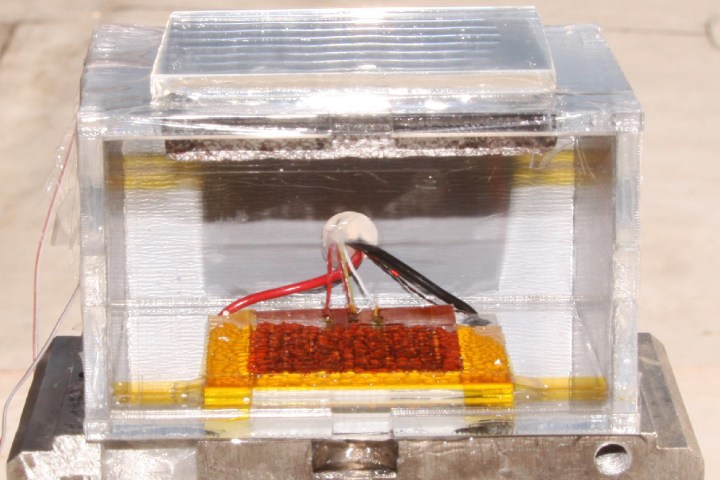
Those are exactly the lines that scientists at the Massachusetts Institute of Technology (MIT) and the University of California, Berkeley are thinking along. To that end, they’ve created a solar-powered device for carrying out this task.
“We’ve built a device that captures water from air,” Evelyn Wang, an associate engineering professor at MIT, told Digital Trends. “It can do this even in areas that are very arid, where the humidity range is down to around 20 percent.”
To accomplish this miraculous feat, the device uses a custom metal-organic framework, which seeks out water and then traps it in vapor form. It then uses the power of the sun, or some other form of heat, to separate the vapor molecules from the metal-organic framework; ending with them being turned into a familiar drinkable liquid, courtesy of a helpful dose of condensation.
Right now, the device the team has built is capable of producing 2.8 liters of water every day for each kilogram of metal-organic framework that’s used. That’s enough for one person (guidelines suggest that we should drink 2-3 liters per day), but researchers on the project think it should be possible to scale it up to produce more water.
“Our next step is trying to build a device that can capture a reasonable amount of water in a way that can be viable for remote areas, where there’s little access to clean water,” Wang continued.
The other challenge the team will have to face is the cost of materials. It’s one thing to have technology capable of performing this activity effectively; it’s quite another thing to do it at a price-point that could make it affordable to be distributed to whoever needs it.
“At the moment, at lab scale, this is quite an expensive piece of equipment,” Wang said. “The target would be to make it really cheap for the developing world.”


